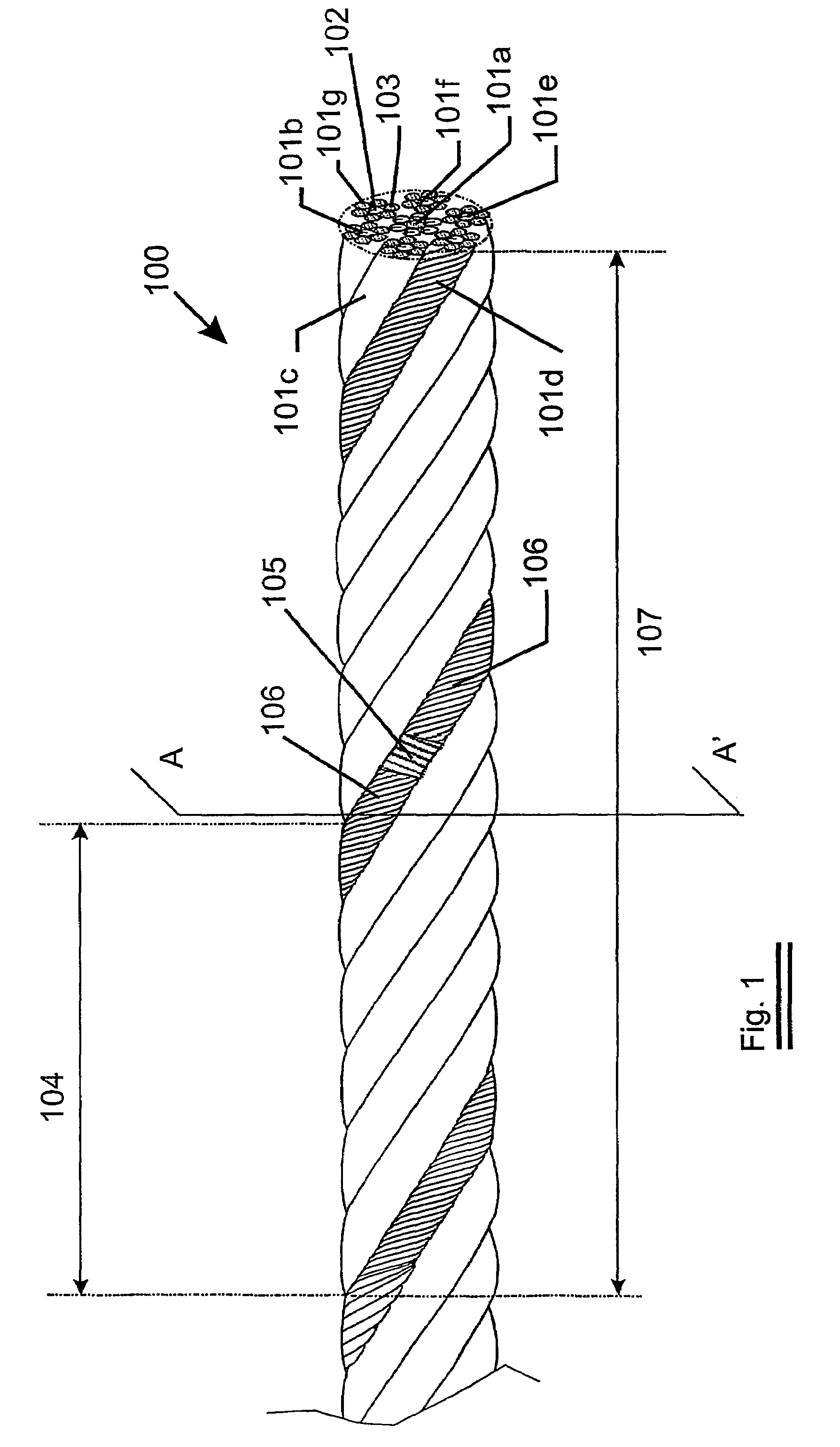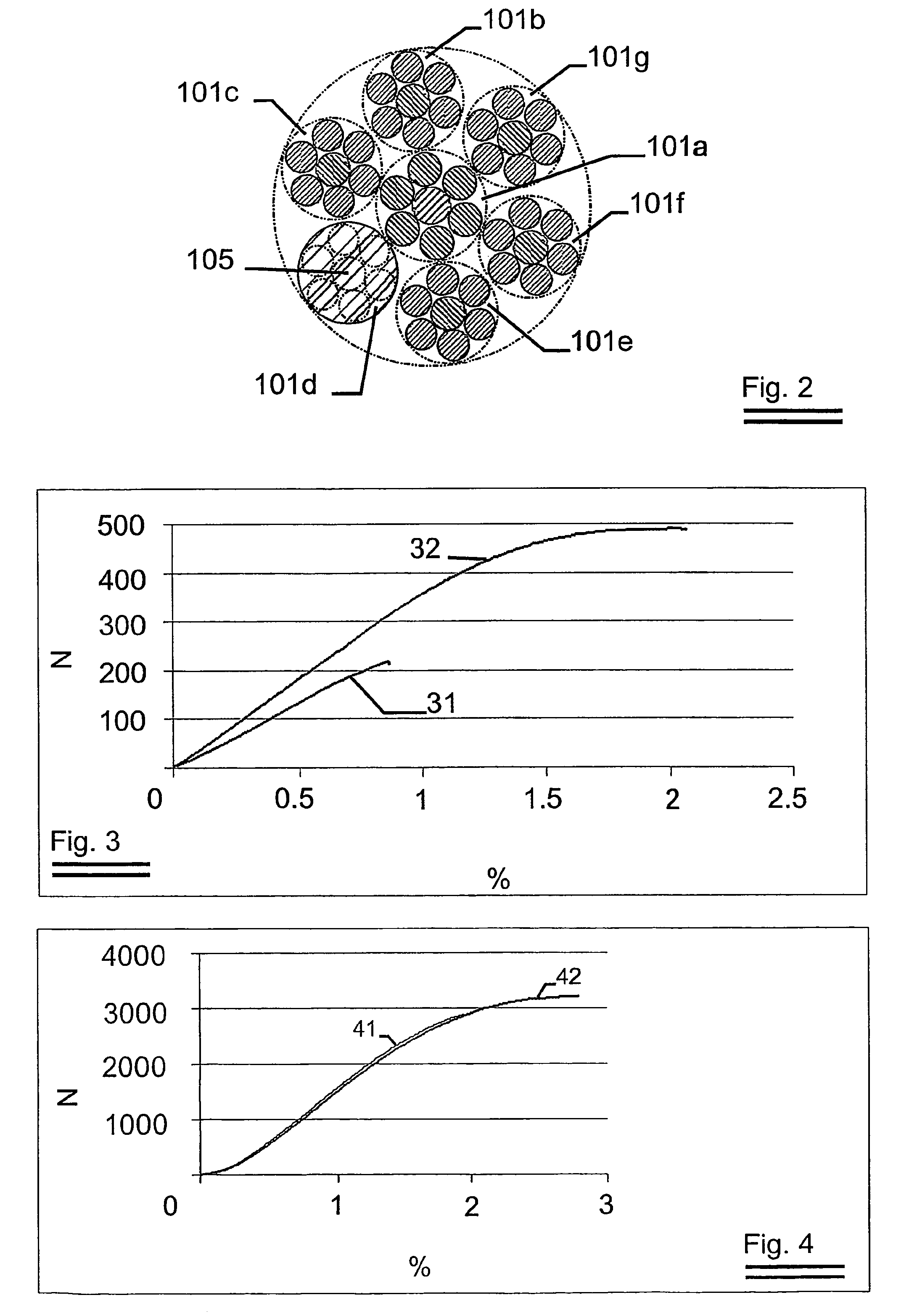Metal cord
a technology of metal cords and metal wires, applied in the field of metal cords, can solve the problems of bending of metal cords, weakening of all adjacent metal cords, and breaking of all adjacent metal cords, and achieve the effect of overcoming or reducing the problems of mechanical properties and price increases
- Summary
- Abstract
- Description
- Claims
- Application Information
AI Technical Summary
Benefits of technology
Problems solved by technology
Method used
Image
Examples
Embodiment Construction
[0041]An embodiment of a metal cord as subject of the invention is shown in FIG. 1. A metal cord 100, provided out of steel having 0.7% C, having a construction “(0.21+6×0.19)+6×(0.19+6×0.175)”. The cord comprises 7 strands (101a, 101b, 101c, 101d, 101e, 101f and 101g). The core strand 101a comprising a core filament 102 of diameter 0.21 mm, being encircled by 6 filaments 103 of a diameter 0.19 mm. The other outer strands 101b, 101c, 101d, 101e, 101f and 101g having all a core filament 102 of diameter 0.19 mm, and 6 encircling filaments 103 of 0.175 mm.
[0042]The lay length 104 of the metal cord 101 is 12.5 mm. The core strand 101a has a lay length of 6.3 mm and the outer strands 101b, 101c, 101d, 101e, 101f and 101g having all a lay length of 8 mm. The core strand 101a and the metal cord itself are twisted in the same direction (S or Z direction) whereas the strands 101b, 101c, 101d, 101e, 101f and 101g all being twined in the opposite direction (Z, respectively S).
[0043]As shown in...
PUM
| Property | Measurement | Unit |
|---|---|---|
| elongation | aaaaa | aaaaa |
| diameter | aaaaa | aaaaa |
| diameter | aaaaa | aaaaa |
Abstract
Description
Claims
Application Information
 Login to View More
Login to View More - R&D
- Intellectual Property
- Life Sciences
- Materials
- Tech Scout
- Unparalleled Data Quality
- Higher Quality Content
- 60% Fewer Hallucinations
Browse by: Latest US Patents, China's latest patents, Technical Efficacy Thesaurus, Application Domain, Technology Topic, Popular Technical Reports.
© 2025 PatSnap. All rights reserved.Legal|Privacy policy|Modern Slavery Act Transparency Statement|Sitemap|About US| Contact US: help@patsnap.com



